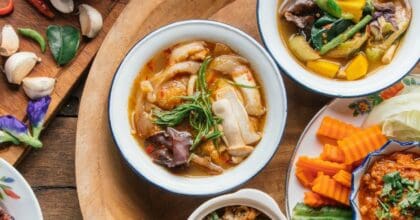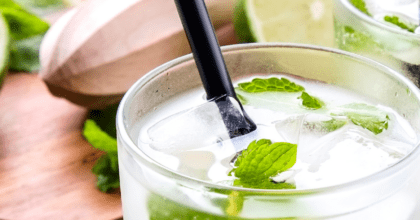Free-from gains momentum: Sales of free-from food products forecast to surpass half a billion in the UK in 2016
It seems that the free-from phenomenon has well and truly taken hold in the UK, as new research from Mintel reveals that sales of free-from foods are forecast to grow 13% to reach £531 million in 2016, up from an estimated £470 million in 2015.
The market growth comes as a result of free-from users widening their repertoires, with almost half (48%) of those who eat or buy free-from saying they are likely to eat more free-from food in the next year. What’s more, Mintel forecast the market to grow further, to reach £673 million by 2020.
Over the past six months*, a third (33%) of Brits have bought or eaten any free-from foods, with 22% buying or eating gluten-free products, 19% dairy substitutes (for instance soya cheese), 16% wheat-free and 16% lactose-free.
Additionally the growth in the market comes alongside a rise in product innovation. Mintel research shows that 12% of new food products launched in the UK in 2015 carried a gluten-free claim, up from 7% in 2011.
33% of Brits have bought or eaten any free-from foods over the past six months
Kiti Soininen, Head of UK Food, Drink & Foodservice Research at Mintel said:
“The free-from market enjoyed remarkable growth in 2015, and further growth is likely to come from the existing pool of users intending to spend more. The growing availability of free-from food and drink products at mainstream supermarkets has allowed established users to widen their repertoires, with easy availability potentially prompting more regular use. ”
As free-from continues to flourish, more Brits are avoiding certain ingredients due to their health credentials, rather than for medical reasons. Indeed, one in four (27%) Brits say they or someone else in their household avoids certain ingredients as part of a general healthy lifestyle, compared to one in five (19%) who report avoidance due to an allergy or intolerance. In particular, 8% of Brits report avoidance of gluten as part of a healthy lifestyle, compared to 5% who report avoidance due to an allergy or intolerance.
Furthermore, the top reason free-from users cite for eating free-from foods is because it makes them feel better, for example healthier, with two in five (39%) giving this reason, whilst one fifth (19%) say they eat these products because they are trying to lose weight.
“The ‘health halo’ of free-from foods is a key driver of uptake and has resulted in a much larger group of users than the limited number of actual or suspected allergy or intolerance sufferers. However, this leaves the free-from food category exposed to changes in consumer opinion and media coverage. The importance of health in driving uptake also means that companies need to ensure that nutrition profiles are best in class.” Kiti adds.
Indeed despite the ‘health halo’, Mintel research shows that the nutritional credentials of free-from food do however matter, as over half (54%) of those who eat free-from would stop eating these products if they thought these were less healthy than standard offerings, for instance if they were higher in fat or sugar.
On the other hand, for those Brits whose cupboards are open to all ingredients, the biggest barrier to free-from food purchase is price. Two fifths (39%) of Brits who do not eat or buy free-from food say it is too expensive compared to standard food. This is followed by taste, with 22% of non-users saying free-from products do not taste as good as standard alternatives, while one fifth (20%) say the quality is not as good as that of standard food.
“Among non-users, price remains a key barrier to wider adoption of free-from foods. This comes as little surprise given that the free-from variants of many staple foods are noticeably more expensive than the standard ones. The growth of the market should bring about scale benefits, helping to bring down prices to some extent.” Kiti concludes.
Finally, when it comes to self-diagnosis Mintel research shows that women are leading the way. Almost one in five (18%) women say the reason they eat free-from foods is because they suspect they have an allergy or intolerance, compared to just one in 10 (11%) men.
*Six months to September 2015.
Mintel’s definition of free-from foods refers to foods that are manufactured and targeted specifically at consumers who suffer from food intolerances and/or food allergies or who are following avoidance diets. Foods that have been specially manufactured (eg pasta, bread) to cater for a gluten-free diet, for instance, are included within this definition.
Press review copies of the Free-from Foods UK 2016 report and interviews with Head of UK Food, Drink & Foodservice Research Kiti Soininen are available on request from the press office.
For the latest in consumer and industry news, top trends and market perspectives, stay tuned to Mintel News featuring commentary from Mintel’s team of global category analysts.
-
Mintel StoreGet smart fast with our exclusive market research reports, delivering the latest data, innovation, trends and strategic recommendations....View reports
-
Mintel LeapMintel Leap is a revolutionary new AI-powered platform that will transform your research process....Book a demo







































